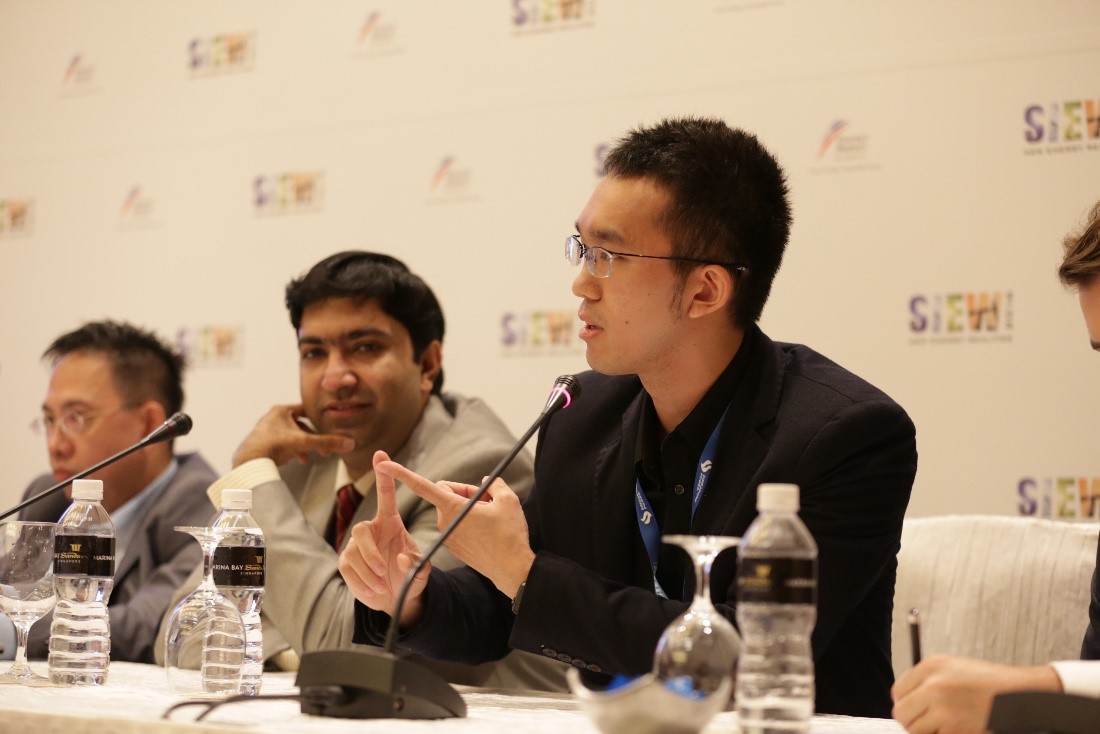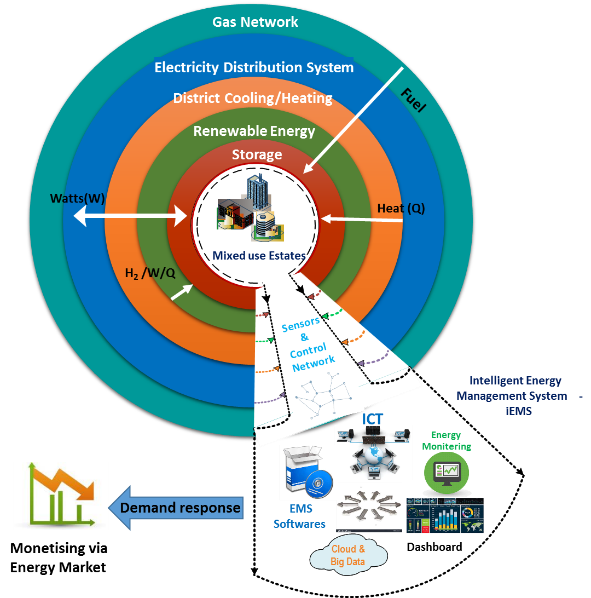
The Energy Research Institute at Nanyang Technological University (ERI@N) organised a roundtable at Singapore International Energy Week (SIEW) 2016 to discuss the prospect of smart multi energy systems. Central to the discussion was the potential of these systems to transform big data generated through renewable energy, hybrid AC/DC microgrids, building energy systems, energy storage, sensors and communications, as well as data analytics, into smart data.
This smart data will enable complex systems to achieve optimal energy balance with minimal wastage. It will also help site operators achieve more accurate predictive and prescriptive maintenance, failure detection and prediction, as well as monetise the assets through real time interactions with the energy market. The interoperability and compatibility with legacy systems is mandatory to fully realise the benefits of system-on- system control platforms.

Building a system around buildings
With advances in technology, energy efficiency is making strides forward in the building space. Keiichi Katajima, Senior Researcher, Hitachi, demonstrated how an air conditioning energy optimisation control system resulted in savings of up to 13% of primary energy use in Abeno Harukas, Japan’s tallest building (300m in height). A similar project carried out in a green-certified building at Nanyang Technological University (NTU) in Singapore resulted in savings of 5%. This underlined the promise of the technology, especially when deployed in non green-certified buildings.
Buildings account for 30% of the energy used in Singapore, said Jimmy Khoo, Managing Director, Singapore District Cooling (SDC). The building therefore is a central point in district level energy optimisation. For example, a district cooling system would provide both an energy and economically efficient urban utility service that delivers system level benefits with respect to cooling buildings as compared to conventional cooling methods. These benefits include round-the-clock availability, demand flexibility, high supply reliability, more space for commercial use with the elimination of in-house chiller plant, fewer constraints for creative building design and lower initial and recurring operating costs.
More importantly, the technology that can help building owners measure and verify energy consumption in real time – enabling them to act accordingly – is already here, said Rohan Rawte, Head of Asia Operation, IESVE. By integrating operational building data (e.g. door entry systems, lightning management, environment sensors, smart meters, etc.) with a 3D performance model, an integrated building performance analysis can be conducted to inform the reduction of energy consumption. Rawte said that technologies like this are accelerating progress towards zero-carbon production, citing the example of REEMAIN (resource and energy efficient manufacturing), an IESVE solution that reduces the energy consumption of factory buildings through the integration of renewable energy technologies and resource saving strategies.
Seah Han Yong, Senior Principal Consultant, Smart City Solutions from Surbana Jurong (SJ), said that SJ is looking to leverage existing technology to deliver key attributes of a Smart City. A means of doing so, he shared, is “Smart City in a Box” – an open software platform that integrates and loads various intelligent solutions and customisable applications onto a dashboard for city officials to plan, collate, monitor and analyse data. In so doing, city officials are also engaging the community and deploying solutions to manage the urban infrastructure more effectively.
Making the system smarter
“More data has been created in the last two years than in the entire previous history of the human race,” said Henrik Bache, Managing Director, Asia, eSmart Systems. At the same time, the energy industry is going through massive changes of its own,especially with enormous progress in renewables and storage, new types of electric consumption, and introduction of new metering, censoring and control equipment.
For a grid operator, this means more dynamics and less predictability, Bache added. The solution to these challenges is to handle both the data and energy resources in the same system. With the power of cloud adding layers of real time analytics and visualisations, precise and actionable insights can be generated to inform smarter, faster and better decision-making. Artificial intelligence will be key to mine these actionable insights from the vast amount of data generated.
Ted Chen, Co-founder and Chief Product Architect Evercomm, highlighted the challenge of transforming human-based energy efficiency knowledge into digital assets. Evercomm has developed tools to collect and validate the energy usage data from various sensor sources, analyse the energy usage and output data (across system-level) to recommend the most efficient equipment setting for the operator. This further emphasises the need to present the data in a simple way for operators to take quick and appropriate action to keep the system optimised.
Introducing a new business model
Martin Hauske, General Manager, Kisters, said that virtual power plants (VPPs) would enable decentralised generation units to optimise their generation, by transitioning from uncoordinated to coordinated production, where generation of renewables only depends on availability. With decentralised units, generation is shifted to periods with little generation from renewables. Through a VPP, flexible customers can be cross-linked to balance production and demand.
Dallon Kay, President & CEO of Diamond Energy, shared his experience in monetising Flexible Electricity Demand (FED) in an optimised and controlled energy system via existing programmes – namely, interruptible load and demand response – in the Singapore electricity market. These programmes provide significant opportunity to curtail FED on a temporary basis to reduce or mitigate operating costs and generate revenue. To monetise FED, electricity consumers will engage demand response aggregators such as Diamond Energy, which operates on a trading revenue sharing model, for interruptible load and/or demand response.
Preparing the workforce for change
Traditional energy systems are converging with advances in information and communications technologies (ICTs), data analytics and new market mechanisms, said Dr Sanjay Kuttan, Programme Director, ERI@N. This will enable cost and energy efficiencies across a system-of-system level, but also present new capability building challenges for a workforce in transition – particularly in the energy sector.
Both employees and employers who are “unconsciously unconscious” of these rapid changes need to be transitioned to a state of being “consciously conscious” of the new demands and opportunities of a connected multi energy system through intelligent networks. The advent of smart multi energy systems has increased the appeal of the power engineering domain, where there are clear needs for new software, algorithms and applications.
Roundtable participants:
- Dr Sanjay Chittaranjan Kuttan, Program Director, ERI@N – Roundtable chair
- Dallon Kay, President & CEO, Diamond Energy Corporation
- Ted Chen, Co-founder and Chief Product Architect, Evercomm
- Seah Han Yong, Senior Principal Consultant, Smart City Solutions, Surbana Jurong
- Henrik Bache, Managing Director, Asia – eSmart Systems
- Jimmy Khoo, Managing Director, Singapore District Cooling
- Martin Hauske, General Manager, Kisters
- Rohan Rawte, Head of Asia Operation, IESVE
- Keiichi Katajima, Senior Researcher, Hitachi
By :Energy Research Institute, NTU